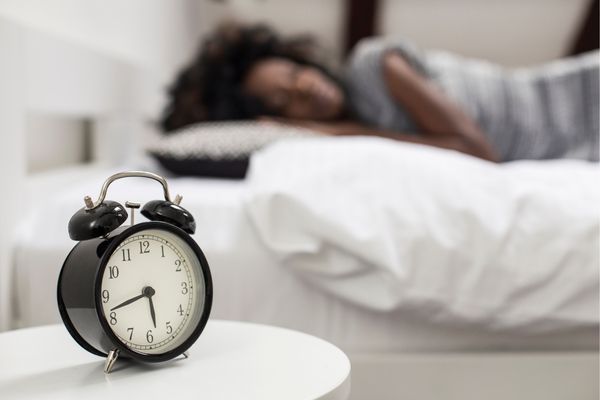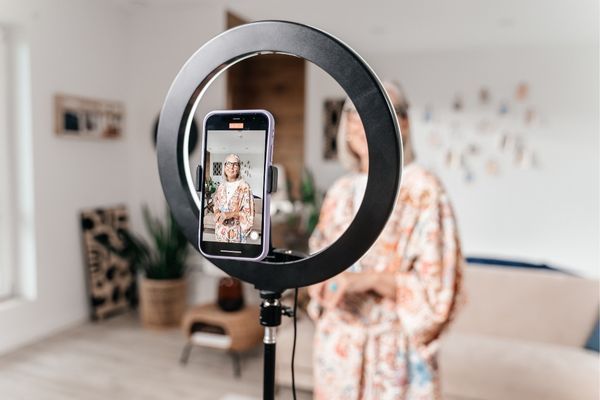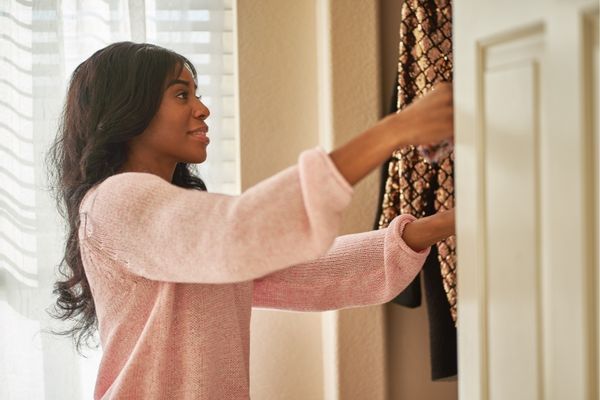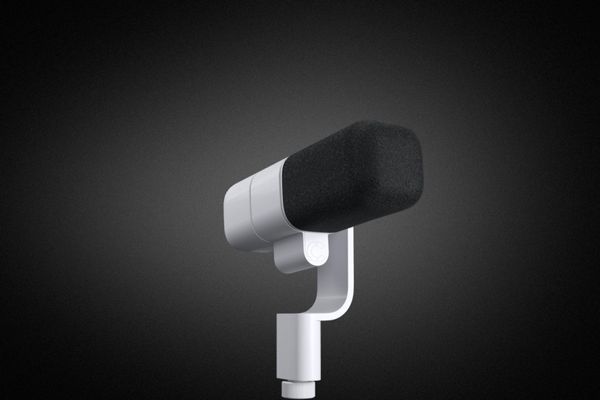If you’ve watched some of your favorite creators on video platforms such as YouTube, you may have noticed how natural they are on camera and how you’d wish to achieve the same one day. The good news is that even if you don’t have the best on-camera presence at this moment, there are ways for you to improve with time. In this blog post, we’ll walk you through nine ways to feel more comfortable on camera, whether you’re recording video for your YouTube channel, live streaming, or doing anything else that requires you to get ready for some lights, camera, action.
Why Does On-Camera Presence Matter?
Appearing uncomfortable on camera to many viewers can come off as lacking confidence in yourself and the content you’re presenting. Poor camera presence, in some ways, can be distracting, and it comes off as being ill-prepared or unknowledgeable. Instead of listening to what you’re saying, viewers may question whether you A. know what you’re talking about and B. should they bother listening any longer. A strong on-camera presence and keeping a viewer engaged is a must if you want to excel in this video creation game, regardless of the platform or medium you want to grow on.
How to Feel More Comfortable On Camera
Now that we’ve covered why improving your on-camera presence is essential, we’ve outlined some tips below to help you step it up a couple of notches.
Get a Good Night’s Rest Before Recording

It’s no secret that sleep impacts every aspect of your well-being. Your brain requires energy to function properly, and sleep is how it resets itself to remain alert. If you don’t sleep enough, you may feel exhausted and struggle to focus or find the words to convey the message you wish to get across to your audience. Make it a habit of getting quality sleep regularly, especially before appearing on camera.
Test/Familiarize Yourself With Your Equipment
Recording equipment can get tricky really quickly. The last thing you want to do while recording is constantly check or even think about whether your new lens is auto-focusing correctly or if your mic is making a weird clicking noise that will ruin your two hours plus worth of footage (been there, unfortunately). Before hitting that red recording button, ensure your equipment is fully functional and ready to go. This way, you won’t come off visually frustrated on camera or be engulfed in a world of worry instead of focusing on the task.
Practice, Practice, Practice

If you think “practice makes perfect” is the biggest cliche you’ve ever heard, you’d be right. However, it’s accurate and applies to almost everything, including improving your on-camera presence. Whether you practice in front of the mirror or on a test recording, you should practice being on camera and not waiting until it’s time to create content to wing it.
Pro-Tip: To keep track of your recorded practice sessions, you can create a project in Video Editor, a free video editing software), to constructively critique your on-camera presence and make notes for improvement.
Prepare a Script or Outline

When you have a camera and lights set up in front of you, finding the right words to relay the message that you wish to convey may be extremely difficult. To avoid this frustration, try writing a script beforehand that you can follow. Even if you don’t follow a script word for word, even having a rough outline that you can glance at to keep you on track will do the trick.
Be Mindful of Your Body Language
In most cases, body language can speak louder than words (seriously, there’s a whole profession dedicated to studying body language, FYI). When you’re on camera, refrain from slouching or using inappropriate gestures. Let your stance and movement on camera come off as confident as you sound, and you’re bound to grab (and keep) viewers’ attention.
Choose Appropriate Clothes

While we’re on the cliche train, might we add “first impressions are lasting impressions” to the list? As tempting as it may be to throw on your favorite slouchy, stained t-shirt, this can be off-putting to your audience. Not to mention, dressing nicely is proven to boost confidence. If you need a confidence boost to help you feel more comfortable on camera, you can start by preparing an outfit that makes you feel like a million bucks.
Speak Clearly and Enunciate Your Words
Though visuals may be your biggest concern regarding improving your on-screen presence, it’s important to note that audio (including your voice) also plays an important part. Speaking clearly, enunciating your words, and knowing when to emphasize specific points of your speech is crucial in keeping your audience engaged and helping them understand what you’re saying.
Pro-Tip: The best way to learn to speak clearer on camera is by watching the pros in action. If you have a video creator or on-camera-personality that does a tremendous job on camera, try studying their videos and how they deliver messages to their respective audiences. Remember, the objective is not to copy them. You want to note what they do well and how you can improve based on what stands out to you about their speech.
Use a Quality Microphone

Speaking of audio, investing in a quality microphone is another way to improve your camera presence. As mentioned earlier, your message is better received when viewers can hear you clearly. Depending on the space you’re recording in, things like white noises or not projecting your voice can make your audio sound unprofessional and distract your audience. A good microphone can help eliminate these barriers. Not sure what type of mic you should go for? You can check out this list of microphones for creators (FYI: the list is geared towards streamers, but these picks are appropriate for you as well).
Make Eye Contact
When you’re in a room recording content alone, it’s easy to forget to maintain eye contact with your camera lens. In the same way eye contact makes an IRL conversation more captivating, it makes your viewers more engaged as if you’re speaking directly to them. Remember to look right into the lens as if your audience is right before you. If you’re recording with a monitor, viewfinder, etc., avoid looking at yourself for extended periods and keep your eyes on the lens.
Show Enthusiasm (Keep up Your Energy)
Though speaking for minutes (let alone hours) at a time can become overwhelming and exhausting rather quickly, you must keep the same energy if you want your audience to feel moved by your content. If you mentally check out while recording, it can be very obvious to your audience, and they may move on to the next piece of content from a creator who can give their undivided attention.
Even if you aren’t a natural at speaking on camera, all is not lost. We all have to start somewhere. If you follow the tips outlined in this blog post, including practicing as much as possible, you’ll feel exponentially more comfortable on camera soon enough.